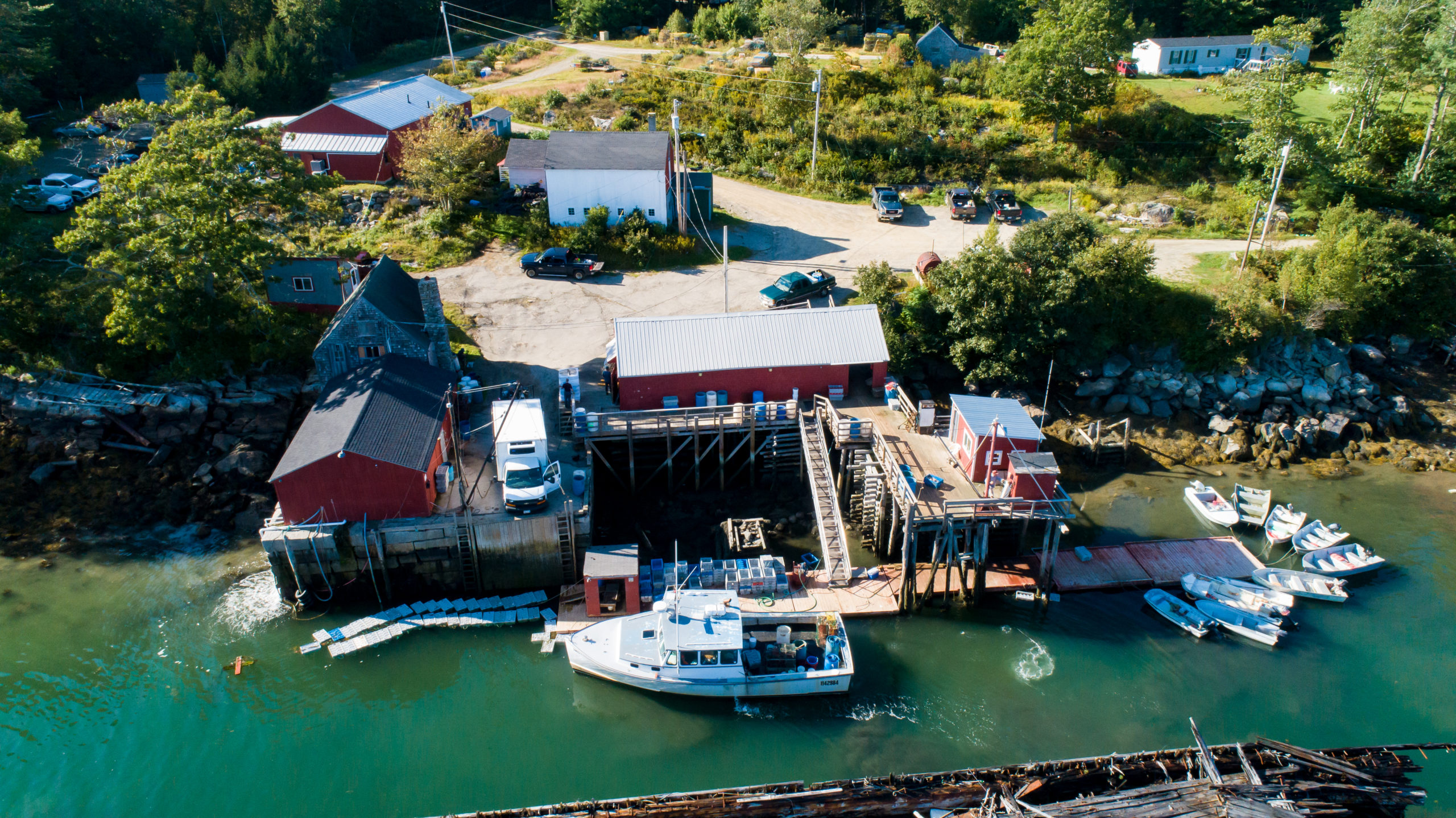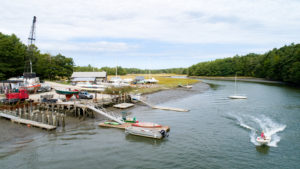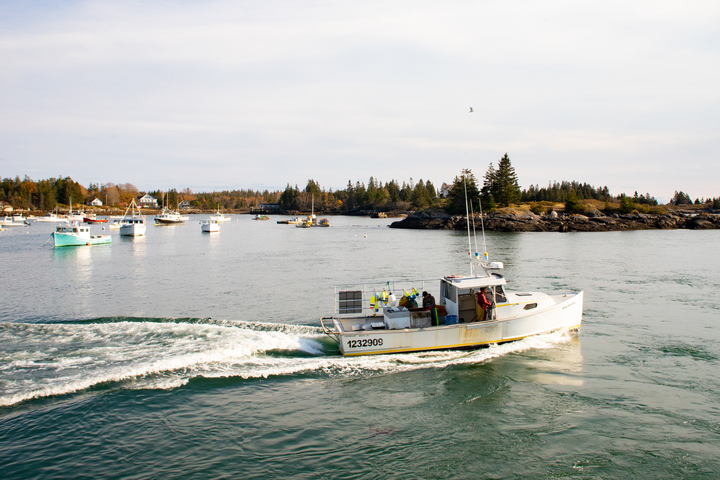It seemed like a no more than a week would go by and we would be at it again; handling calls or emails from individuals, businesses, and communities about the critical challenges facing Maine’s iconic working waterfronts. We knew the themes well enough: skyrocketing real estate prices creating increased pressures to sell and uncertainty for the next generation, the need to preserve waterfront access for people who make their living on the water, and challenges with funding for infrastructure improvements to deal with the impacts of climate change. However, the sense of urgency that came with these conversations was alarming.

Thanks to our work with SEAMaine in highlighting the challenges facing Maine’s seafood industry due to COVID-19 for the Governor’s Economic Recovery Committee, we knew that working waterfronts would undoubtedly face increased pressure as the pandemic wore on. This proved to be true as with each passing day more people retreated to the safety of Maine’s coast and snapped up available real estate. As coastal property values climbed, other pressures came to bare as well. Regulations intended to protect the critically endangered North Atlantic right whale and the establishment of a location for a future offshore wind research array caused ripples of uncertainty to course through the working waterfront.
For a working waterfront business facing these compounding uncertainties, it remains a stressful time. In 2020, the Maine Coast Fishermen’s Association released a report demonstrating that the nature of working waterfronts is changing along the Maine coast, and it provided a foundation which the Island Institute hoped to build upon. While still handling numerous calls for help, we set to work to better understand the current challenges facing Maine’s working waterfronts and identify specific action steps we could take as a state. We were lucky enough to snag a partner in longtime working waterfront advocate Merritt Carey and set to work doing just that.
The report highlights the fact that Maine’s ability to continue the economic growth of its marine sector is at risk as access to the shore disappears at an increasing rate. Once these access points are gone, they do not come back. Maine must have a statewide action plan to protect its working waterfront and the access it provides before it is so diminished that it becomes irrelevant.
Doing so will be no easy feat, but we are starting from a good place. The State of Maine has an amazing program, Land for Maine’s Future (and the Working Waterfront Access Preservation Program it funds), that can help ensure some working waterfronts are preserved for generations to come. Historically, funding for this program has only been available intermittently, and even now with $4 million dedicated to it over the next four years, the program is not structured to move quickly in the event of a working waterfront property going up for sale. Furthermore, because the program relies on selling property interest in the form of a working waterfront covenant to the State, the program is not always an ideal fit for the complex needs of Maine’s diverse working waterfront. Nevertheless, it provides critical support for our working waterfronts as we seek to expand and diversify the amount and types of support available to these vital places where the ocean meets the economy.

Our report suggests how to take the next steps to develop this type of support for our working waterfronts by identifying and illustrating the need for:
- Long-term, systemic interventions that recognize both the place-based nature of working waterfronts and the significant pressures that working waterfronts face or will face that come from forces beyond the control of any one entity;
- A nimble entity that is looking holistically at this challenge as well as its multiple facets and can help support or drive support to working waterfronts;
- Technical assistance and institutional support to help coordinate the complexity of the challenges ahead and the resources available; and
- Those who care about working waterfronts to start thinking proactively about how to identify and support critical working waterfront businesses which provide a service that is systemically important to our communities and state.
As we and other partners across the state put our noses to the proverbial grindstone and start to put these recommendations into place, there is already good news to be shared. The Land for Maine’s Future program, which Includes the Working Waterfront Access Protection Program (WWAPP), was funded in the State’s most recent budget. And while the $4 million over that WWAPP will receive over four years is a drop in the bucket when compared to the overall needs of the working waterfront, it can and should be the catalyst for increased statewide attention and support for all of Maine’s working waterfronts, from York to Eastport.

For those of you who feel as passionately about saving the working waterfront as we do, you will be excited to learn that the National Working Waterfront Networks triennial conference will be held in Boston July 19-21, 2022. We are thrilled to be able to play our small part in organizing this conference and look forward to seeing some of you there, whether in person (fingers crossed) or remote. While you are waiting, please check out this awesome video that captures just how important Maine’s working waterfronts are to all of us.
Finally, if you are reading this as a working waterfront business owner in need of support, please do not hesitate to give us a call or shoot us an email. We are happy to help. Also, please check out our grant programs intended to support your working waterfront business! We have Spark! Grants to support clean energy solutions (and money savings!) for marine businesses and ShoreUp grants to help address flooding, storm surge, and sea level rise.
If you are interested in learning more about our work or how you can get involved in helping to save Maine’s working waterfront, please check out our website, or reach out to us — Sam Belknap or Lia Morris with the Island Institute Blue Economy team — directly.
In the meantime, go eat some Maine seafood—preferably something bought close to home and directly from a waterfront business. With all Maine seafood crossing a working waterfront, those purchases directly support the preservation of our state’s working waterfronts and the people and livelihoods that depend on them. So, it’s good for you, good for those businesses, and good for the coast we all love.
Additional Resources
- ”Booming real estate sales imperil shorefront access;” Ellsworth American; 12/2/21
- “Maine’s working waterfronts facing a tidal wave of threats, Island Institute report finds;” Portland Press Herald; 12/1/21
- “Report: Maine’s working waterfront is in economic danger;” The Associated Press; 12/1/21
- “New report finds threats to Maine working waterfronts, proposes solutions;” Mainebiz; 11/29/21
- Waypoints: Connect – Working Waterfront Protections

